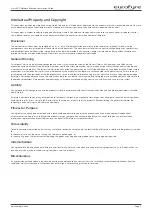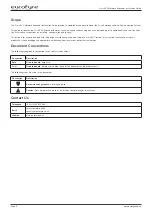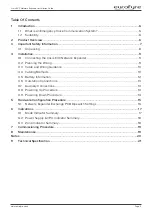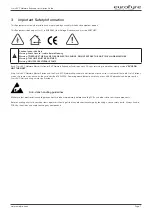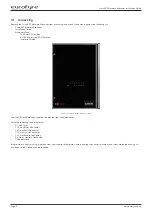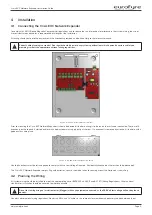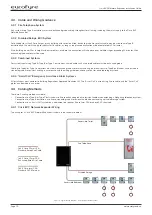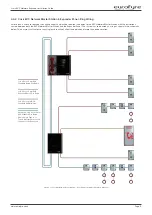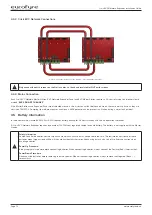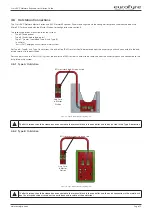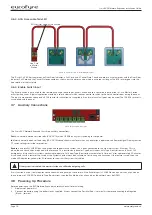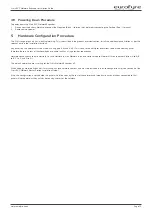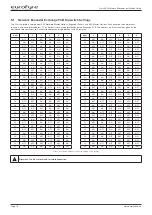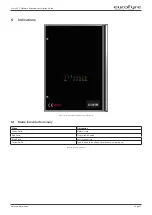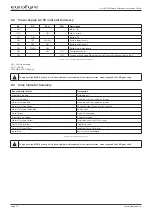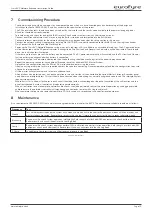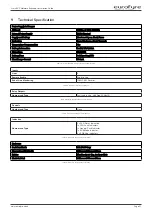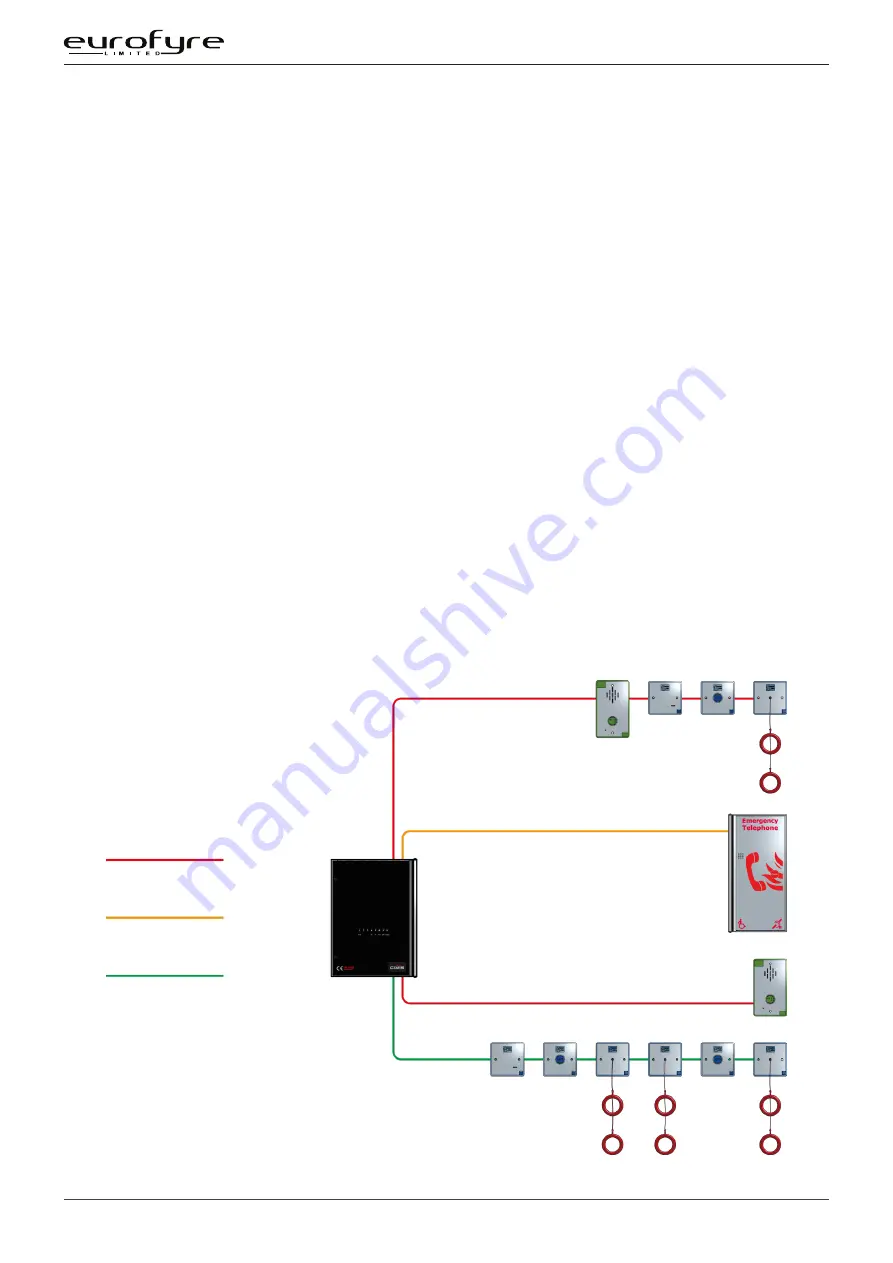
Crisis EVC Network Expander Installation Guide
Page 10
www.eurofyre.co.uk
4.3 Cable and Wiring Guidance
4.3.1 Fire Telephone System
Any system using Type A outstations must use enhanced grade cabling throughout for all wiring, including the mains supply to the Crisis EVC
Network Expander.
4.3.2 Disabled Refuge EVC System
For buildings less than 30m in height, or any building with sprinklers fitted, standard grade fire resistant cable may be used to wire Type B
outstation and the mains supply to the Master Controller; as long as the planned evacuation will be completed in 30 minutes.
If the building is over 30m in height without sprinklers, or where the evacuation will take place over multiple stages exceeding 30 minutes, then
enhanced grade cables must be used.
4.3.3 Combined Systems
For systems containing Type A, Type B or Type C outstations, shared cable such as network cables must be enhanced grade.
Cabling to Type A or Type C outstations must be in enhanced grade fire resistant cabling. Individual spurs to Type B outstations can be wired in
standard grade fire resistant cabling in accordance with the wiring guidelines already set out for disabled refuge systems.
4.3.4 “Assist Call” Emergency Assistance Alarm Systems
All installations must conform to Building Regulations Approved Document M. The “Assist Call” is wired using 2 core cable, and the “Assist Call”
plates can be wired in any order.
4.4 Cabling Methods
There are 3 cabling methods available:
•
Connection to a Type A or Type C outstation: use 2 core enhanced grade fire resistant cable when extending a firefighting telephone system.
•
Connection to a Type B outstation: use 2 core standard grade fire resistant cable when extending a disabled refuge system.
•
Connection to an “Assist Call” system on a dedicated line requires 2 core 1mm CSA or above PVC sheathed.
4.4.1 Crisis EVC Network Expander Wiring
The wiring for a Crisis EVC Network Expander is shown in the schematic below.
1 off 2 Core 1.5mm CSA
Standard Rated Fire Cable
1 off 2 Core 1.5mm CSA
Enhanced Rated Fire Cable
1 off 2 Core 1mm CSA
Standard PVC Minimum
Accessible Toilet
Fire Telephone
Disabled Refuge
Accessible Bedroom
Figure 4: Typical Wiring Diagram - Crisis EVC Network Expander



